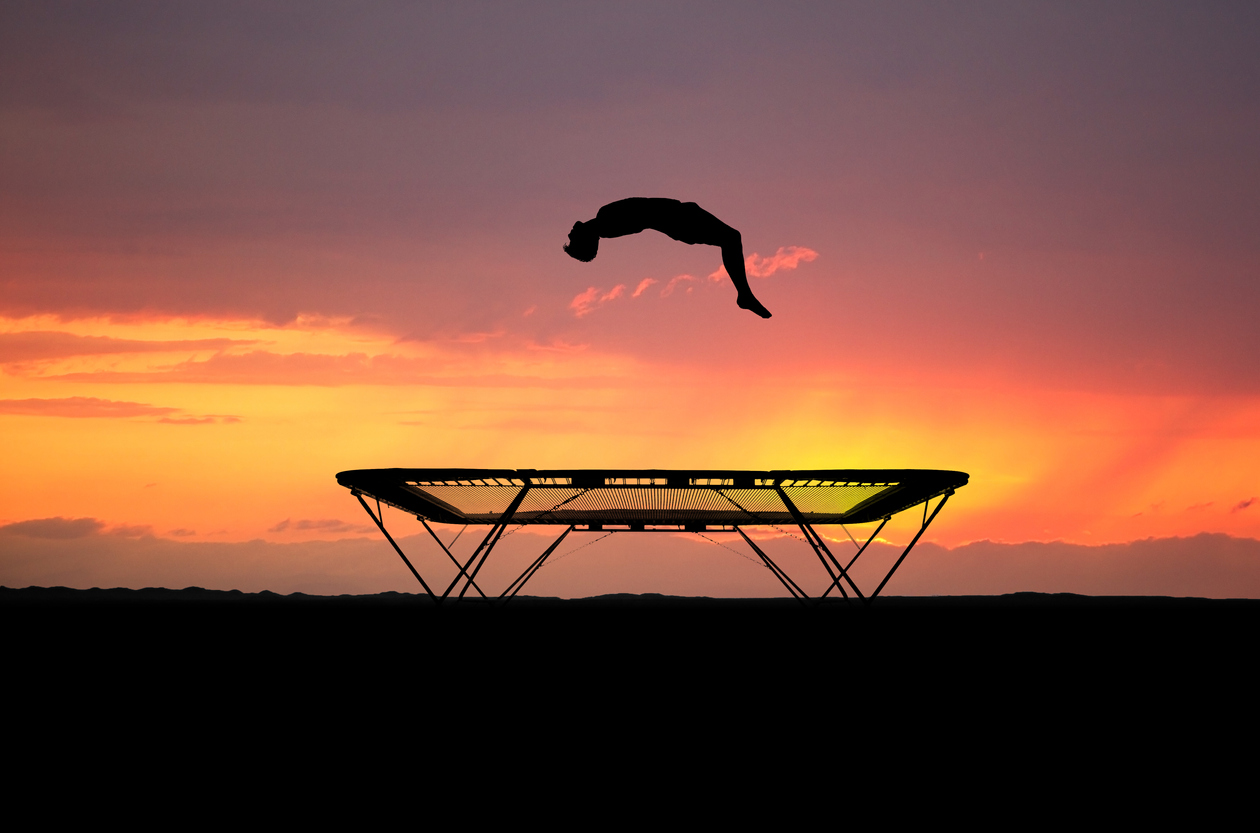There are two approaches to mental strength – the wall and the trampoline.
Most “high performance” coaches emphasize the wall. The wall is a strategy of rigidity – it is about meeting force with force. Being tough. Not letting negativity in. Taking control and forging ahead.
A few weeks ago, I received an email from an ex-professional athlete and current “mental dominance” coach, arguing that there are two types of people in this world: those who love the work and those who seek to sleep. He argued that individuals who emphasize rest and recovery are also those who are also always looking for the easy way out – and he was personally relieved he wasn’t one of them.
Coaches with this mindset equate rigidity to strength. They see vulnerability as weakness – and definitely not something to “indulge in.” As a consequence, they proselytize the wall.
But there’s also the way of the trampoline – where one absorbs force and channels it. This is a strategy about capacity and spring. Of accepting and allowing emotions to run through you – without being identified to them – and then steering your energy into a desirable direction. Of redirection.
I grew up only knowing the wall. I internalized the notion that strength was always being positive, forceful and in control. Only in recent years have I discovered the virtues of the trampoline. When I realized that rest, grace, forgiveness, compassion, and humour have as much to do with strength – the capacity to withstand great force or pressure – as any rigid stoicism.
Moreover, it was only through embracing the trampoline that I finally attained performance consistency. For so many years of my life, I pursued – and failed to achieve- consistency in artistic and athletic performance because I followed the societal template of strength – i.e. the wall.
I would chug along and chug along — totally fine – until I inevitably hit a disruptive roadblock. Then, the wheels of my machine would fall off because there was no flexibly embedded into my emotional system (which is what the trampoline brings).
Paradoxically, when I finally allowed myself some space for compassion, gentleness, rest and imperfection … that’s when I came into my own, and my standards were met.
A lot of folks advocate for one approach only. In reality, both the wall and the trampoline are essential to emotional strength. Sometimes you need to be gentle with yourself. Other times you need to be ruthless and exacting. Sometimes you laugh and cry and go for grace. Other times, you say, no, fuck this; today I’m getting what I came for.
The dualism matters. I’ve learned to watch out for times when I have fallen too far into one approach over the other.
What’s more, it’s appropriate to be skeptical of any coach who does not intuitively appreciate the virtues of both. The wall and the trampoline work best in tandem. Any coach who can’t see this won’t be equipped to help a performer along the full journey.






